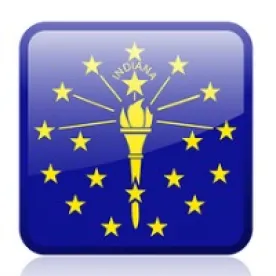Last week, Governor Holcomb signed into law SEA 389, a controversial set of changes to Indiana’s Isolated Wetlands law. Although the original version of SEA 389 virtually eliminated Indiana’s Isolated Wetlands program altogether, amendments to the act in the final version Holcomb signed into law ultimately preserved the program with some major modifications.
A wetland is an area of land that is permanently, seasonally, or intermittently flooded by water. The term generally includes swamps, marshes, bogs, and similar areas. Isolated wetlands in Indiana are Waters of the State and are subject to Indiana's Isolated Wetlands law.
In certain instances, a permit is needed for activities occurring in a wetland. Applicants for a permit demonstrate to the Indiana Department of Environmental Management how they will avoid impacts to the wetland. If an applicant is unable to completely avoid impacts, they must demonstrate how their proposed project has minimized unavoidable impacts to isolated wetlands. Applicants provide compensatory mitigation – restoration or creation of wetlands to offset loss of wetlands during wetland activity – for any remaining adverse impacts to isolated wetlands.
The 2021 Indiana Legislative Session included Senate Enrolled Act No. 389 which made extensive changes to Indiana’s wetlands law. Governor Holcomb signed the bill into law on April 29, 2021. These changes are retroactive and effective Jan. 1, 2021.
Impact of the Changes on Class III Wetlands
Indiana’s isolated wetlands are defined as being a Class I, Class II, or Class III wetland. This determination is made as part of a technical assessment by a wetland or environmental consultant. Class III wetlands are those that have been largely undisturbed by human activity or development, support more than minimal habitat or hydrologic functions, or are rare and ecologically important. The 2021 changes to the wetlands law have very little impact on Class III wetlands
Impact of the Changes on Class II and Class I Wetlands and Ephemeral Streams
Class II wetlands are now defined as those that support moderate habitat or hydrological functions but are generally without threatened or endangered species or their habitats. Class II wetlands used to be exempt from permitting if they were smaller than one-quarter of an acre. The 2021 law exempts Class II wetlands from permitting if they are smaller than three-eighths of an acre.
The definition of Class I wetlands was not changed in the 2021 law. Class I wetlands are still defined as those where at least 50 percent of the wetland has been disturbed by human activity, the wetland supports minimal habitat or hydrologic function, and does not provide habitat for threatened or endangered species. This entire class of wetlands is now exempt from permitting. Previously, Class I wetlands were only exempt if they were smaller than half an acre. In addition, compensatory mitigation is no longer required for activities that impact Class I Wetlands.
The 2021 law also provides that a permit is not required for dredge and fill activities in “ephemeral streams,” which are defined in the new law as surface water flowing or pooling only in direct response to rain or snowfall.





 />i
/>i

